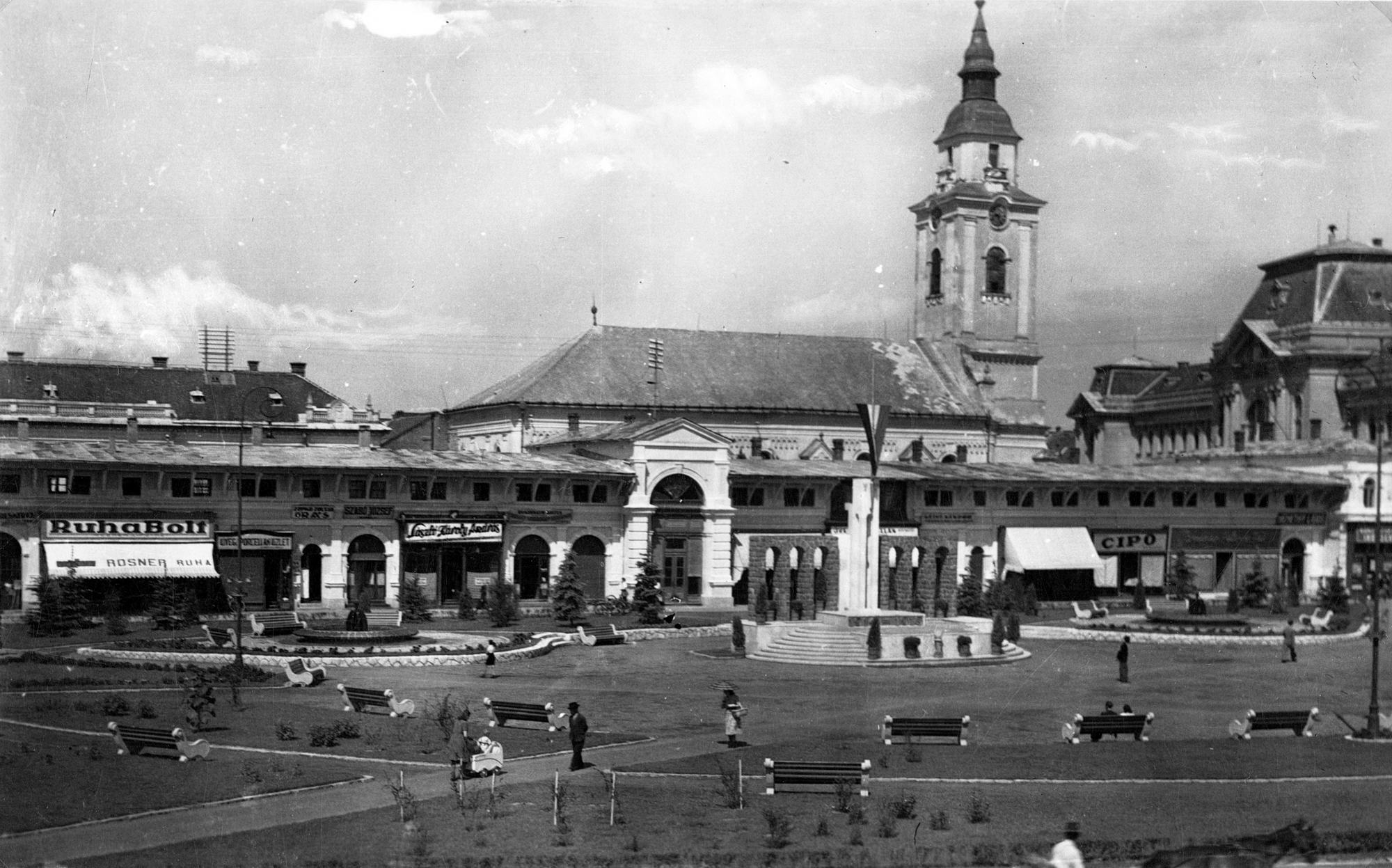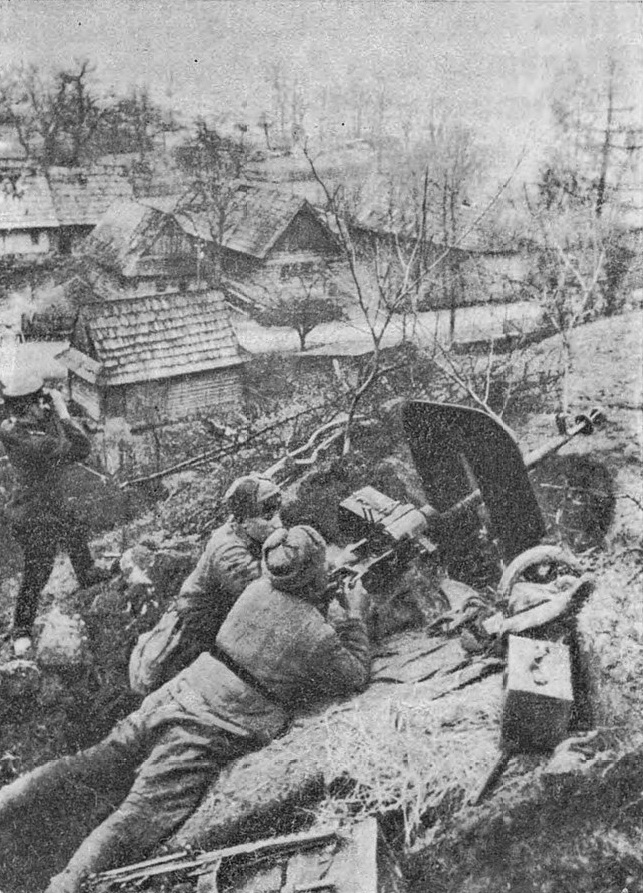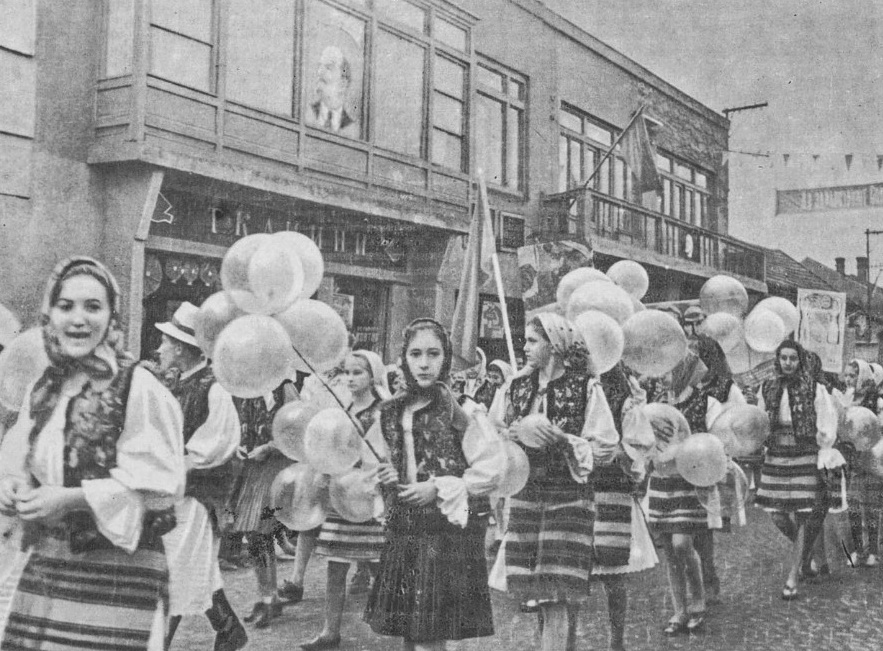Editor’s Note: This is the fourth installment in the Kyiv Post’s “Honest History” project, a series that debunks myths about Ukrainian history used by propagandists. The stories and videos are supported by the Black Sea Trust, a project of the German Marshall Fund of the United States. Opinions expressed do not necessarily represent those of the Black Sea Trust, the German Marshall Fund or its partners.
BEREHOVE, Ukraine — Fresh trouble with a difficult neighbor is brewing for Ukraine, but this time it’s not only from Russia. Leaders in Hungary, a nation of 9.8 million people that borders Ukraine’s southwestern Zakarpattya Oblast, 800 kilometers southwest of Kyiv, is making Ukraine’s life as difficult as possible.
The region is home to some 100,000 ethnic Hungarians, who constitute 10 percent of Zakarpattya’s population of 1 million.
As Russia did in eastern Ukraine, Hungary is extending its influence in Zakarpattya, trying to dictate to Ukraine how to conduct its internal affairs, accusing it of suppressing the Hungarian minority, and even threatening to block Ukraine’s integration into the European Union and NATO.
Today’s conflict
The tensions between Ukraine and Hungary flared up in September, when the Ukrainian parliament introduced legislation that makes Ukrainian the only language of education in the country’s state schools. Although the new language law was aimed mostly at cutting the influence of the Russian language, it angered most of Ukraine’s neighboring countries, who saw it as suppressing their national languages as well.
Tensions with Romania and Poland on this issue have been solved diplomatically, but Russia and Hungary have been using the language law to claim Ukraine is discriminating against national minorities.
The shift to the right in European politics isn’t helping matters: the radical Hungarian political party Jobbik, which in 2014 openly called for Zakarpattya to be united with Hungary, took 26 seats in the Hungarian parliament and came second after current Prime Minister Viktor Orban’s ruling alliance Fidesz-KNDP (133 seats) in Hungary’s parliamentary election on April 8.
In turn, Ukrainian nationalists’ provocations against Hungarian flags, and what the Security Service of Ukraine has claimed was a Russian instigated attack on a Hungarian cultural center in Zakarpattya, were widely covered in both the Hungarian and Russian media.
Now Ukraine’s plan to restore a military base in Berehove, a city of 20,000 residents some 10 kilometers away from the Hungarian border, has become the latest sore point in Ukrainian-Hungarian relations.
Hungarian Foreign Minister Péter Szijjártó expressed his concerns about the plan, which would see some 800 Ukrainian soldiers being based in the area, which is populated mostly by ethnic Hungarians. Szijjártó said the Ukrainian government considered the Hungarian minority a threat to Kyiv and called this situation “disgusting” on March 19.
But despite Hungary’s widespread involvement in the region, Zakarpattya is far from being dominated by ethnic Hungarians. In reality, it is a multinational land. According to the last national census in 2001, Zakarpattya was mostly inhabited by Ukrainians (1 million), Hungarians (151,000), Romanians, Russians, Roma, Slovaks, Germans and Jews.
So why is Hungary intervening in Ukrainian affairs in Zakarpattya now? The reasons lie in the region’s past.
Lost empire
Zakarpattya, a region of 12,800 square kilometers in the western area of the Carpathian Mountains, only became part of Ukraine about 70 years ago, after World War II in 1946.
The Soviet Union positioned that as “the restoring of historical justice” — bringing back a land mostly inhabited by Ukrainians. But Hungary saw the loss of this territory as a great injustice.
Over the courses of the 19th and 20th centuries, the area was under control of the Austrian Empire, the Austro-Hungarian Empire, Czechoslovakia, the short-lived Carpathian Ukraine, then Hungary, the Soviet Union, and independent Ukraine.
Before World War I, Hungary had been part of the Austro-Hungarian Empire, the second largest state in Europe after the Russian Empire. During the 1914–1918 war, the Austro-Hungarian Empire, in alliance with the German Empire, Osman Empire and the Bulgarian Kingdom, fought against the Allied Forces of the United Kingdom, France and Russia.
It lost the war, and also territories that are now part of today’s Serbia, Romania, the Slovak Republic and Ukraine.
The allies assigned the territories to Hungary’s neighbors under the Paris Peace Treaties of 1918–1920. Zakarpattya, also known as Carpathian Ruthenia and Transcarpathia, became part of Czechoslovakia as a result of the Treaty of Saint-Germain in 1919, while other territories were given to the Kingdom of Yugoslavia, the Kingdom of Romania, and to Czechoslovakia under the 1920s Treaty of Trianon, what many Hungarians still regard as a national trauma.
According to Imre Szakal, a history professor at Ferenc Rakoczi II Transcarpatian Institute of Berehove and an ethnic Hungarian, Ukrainians in Transcarpathia welcomed the transition to Czechoslovakia, expecting the new rule to build the better life for them.
But the Hungarians were devastated. “They just couldn’t believe they were not in Hungary anymore. The old order vanished. They had to start learning the Czech language, rules, and laws,” Szakal said.
Slavs and Hungarians
The new Czech rulers were liberal towards Ukrainian culture in Zakarpattya, Volodymyr Kenyyz, historian and principal of the Berehivska Gymnasium in Berehove told the Kyiv Post.
Kenyyz links this liberal attitude to the fact that both Czechs and Ukrainians are Slavs, while Hungarians aren’t.
Historians disagree about who dominated the region in the past: Ukrainian historians believe that the whole area of the Carpathian Mountains was mostly inhabited by Slavic tribes from the 6th to 10th century.
Western Slavs, including White Horvats, Czechs and Poles, are believed to trace their origin to the Slavic tribes of the Carpathians. Then came the Hungarians.
They came from the South Ural region (now Russia) and settled between the Tysa River and the Danube River in the 9th century, starting the age of Hungarian rule in these lands.
Gyorgy Csatary, the head of the history department at Transcarpatian Institute of Berehove, argues that Slavic dominance of these lands is unproven.
Hungarians in Ukraine
Ukraine’s neighbors should now leave the historical tensions in the past and learn to live in peace and harmony under the modern order, Kenyyz said.
But Hungary has not forgotten that it once owned Zakarpattya.
The current Hungarian government of Prime Minister Viktor Orban has been conducting nationalist conservative policy, and has made Hungarians living abroad one of its main focuses.
Soon after Orban came to power in 2010, Hungary adopted a simplified procedure for granting Hungarian citizenship.
As of 2016, more than 760,000 foreigners had received it, with only 28,000 applications being rejected.
Up to 100,000 citizens of Zakarpattya have received Hungarian passports, according to Deputy Foreign Minister of Ukraine Vasyl Bondar.
This is roughly the number of the Hungarian diaspora in the region. And Hungarians have recently confirmed their support for the nationalist Orban: his party won 133 out of 199 seats in the Hungarian parliament at the election on April 8.
Of the territories that used to be part of the Austro-Hungarian Empire, Ukraine has the smallest Hungarian diaspora: Some 100,000 people, almost all of them in Zakarpattya.
In comparison, as of 2013 there were 1.2 million Hungarians living in Romania, some 459,000 in the Slovak Republic, and 251,000 in Serbia.
The percentage of ethnic Hungarians in the general population is also by far the lowest in Ukraine — they constitute 0.24 percent of the country’s 42-million population.

A man rides a tractor in Bene village of the Berehivskiy district of Zakarpattya Oblast, 800 kilometers southwest of Kyiv, on April 26. The district is mostly inhabited by ethnic Hungarians. (Veronika Melkozerova)
Life in Zakarpattya
Life isn’t easy in Zakarpattya, the smallest of Ukraine’s oblasts, with a budget of only some 2.6 million euros in 2018.
Hungarian citizenship brings locals the right to work in Hungary and other European Union countries, giving them a chance to make much more than they could at home.
The average monthly wage in Zakarpattya is 210 euros, one of the lowest in Ukraine. Across the border, Hungarians make on average 955 euros a month.
The city of Berehove and the nearby villages have the highest concentrations of Hungarians in Zakarpattya. Here, Hungarians constitute 48 percent, outnumbering Ukrainians, who make up 39 percent.
If one asks what time it is in Berehove, locals offer two answers: Ukrainian time and Hungarian time, one hour behind.
The road and street signs are written both in Hungarian and Ukrainian. It goes for people’s names too: Zakarpattya Hungarians often have a Hungarian and a Ukrainian name.
The Hungarian government is also present in the region. It offers zero-interest loans to people who seek to start a business in Zakarpattya — both Hungarians and Ukrainians. But a key demand is that the business plan is written in Hungarian.
Hungary also funds educational centers in Zakarpattya and provides free vaccines.
Even Deyak, a local nationalist activist, says Ukraine should learn from Hungary how to treat its people.
Hungarian authorities solve the problems of locals, while the Ukrainian government never has money for Zakarpattya’s needs, Deyak argued.
“Of course, they do it for their own benefit. More Hungarians mean more voters,” Deyak said.
Kenyyz agreed, saying that “Orban rules in Zakarpattya because Ukraine doesn’t do enough for locals.”
“Now the national issue is not so important. People just go where the life is better,” said history professor Csatary.
Political quarrels
Hungary, meanwhile, claims that a Ukrainian nationalist resurgence is spoiling Kyiv’s relations with its neighbors. Since Ukraine introduced the school language law in September, Hungary has been blocking the meetings of the Ukraine-NATO Commission.
In response, the Ukrainian government has promised to postpone the implementation of the law until 2023.
“We’re not against learning Ukrainian, we just want to have a choice, as in a democratic country,” Csatary says, speaking in Ukrainian.
He learned the language while studying history at Uzhhorod University.
Unlike him, most senior members of the Ukrainian-Hungarian community don’t speak Ukrainian.
Younger people speak Ukrainian as a foreign language. There are more than 90 public schools in Zakarpattya where children study in Hungarian.
When the new language law comes into force in 2023, they will have to switch to Ukrainian.
But Csatary thinks this won’t be possible. “The government wants our kids to learn Ukrainian like Ukrainian kids do, using the same textbooks. But here there has to be a special approach — to teach Ukrainian as a foreign language,” he says.
Budapest’s tough response to Ukraine’s language legislation has in turn provoked a reaction from Ukrainian nationalists in Zakarpattya.
Local nationalist organization Svoboda in November ripped the Hungarian national flag from Berehove City Council building.
The Carpathian Sich nationalist organization in March held a rally in Uzhhorod which the media described as anti-Hungarian. Deyak, however, denied it was anti-Hungarian.
He said that local nationalist activists halted pro-separatism movements inspired by Russian proxies in 2014, following the beginning of Russia’s war against Ukraine that year.
“But Russia hasn’t stopped undermining Ukraine. This time it’s using our tensions with Hungary,” Deyak says.
There were two arson attacks on the Hungarian Cultural Center in Uzhhorod in February, which the Ukrainian authorities have claimed were ordered by Russia to foster conflict between Ukraine and Hungary.
Earlier this year Ukraine decided to strengthen its western border by reopening the military base in Berehove.
Berehove City Council, which is made up mostly of ethnic Hungarians, supported the decision. But Budapest criticized the move.
Foreign Minister Szijjártó said the Ukrainian government considered the Hungarian minority a threat to Ukraine’s territorial integrity.
He added that “Hungary has never made any claims for Ukrainian territories, and respects all international agreements.”
Ukraine’s Foreign Ministry answered that it was up to Ukraine to decide where to place military bases within its territory.
“As a country at war, we only want for there to be no further provocations in Zakarpattya. But such claims by Hungary are benefiting the Kremlin,” Ukraine’s Foreign Ministry’s spokesperson Mariana Betsa told Ukrainian television channel 112.
Locals also see no threat from Hungary, remembering that it was one of the first countries to invite Donbas war veterans and their families for medical treatment, and one of the first countries to condemn Russia’s invasion of Crimea.
“It’s 2018, and Ukraine is part of Europe,” the local nationalist Deyak said. “Why should I hate the Hungarians for what happened 75 years ago?”




